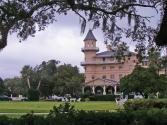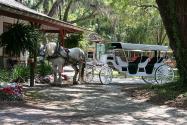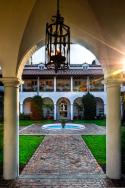Camera-ready instructions
Manuscripts must follow strictly the format and size constraints indicated below. Your goal as an author is to produce a clearly readable submission within these constraints.
- Genneral
- Your manuscript must be in PDF. Therefore, irrespective of whatever text processor or formatter you use to write your paper (LaTeX, Microsoft Word, FrameMaker, etc.), please convert the output to PDF before submission. Under Windows, for example, PDF files can be produced using the Adobe Acrobat product. To maximize the chances that your paper will print correctly, please use only standard printer fonts (e.g., Times Roman, Helvetica, etc.) or standard TeX Computer Modern fonts; other fonts may be used but must be included in the PDF file.
- Page Limit
- Manuscripts MUST be no more than six (6) pages. This length includes everything: figures, tables, references, appendices and so forth.
- Page Format
- Your manuscript must use a 9pt font (or larger) and be correctly formatted for printing on Letter-sized (8.5" by 11") paper. Paper text blocks must follow ACM guidelines: double-column, with each column 9.25" by 3.33", 0.33" space between columns and single-spaced.
- Title
- Must be in Initial Caps Meaning First Letter of the Main Words Should be Made Capital Letters on the First Page of your manuscript.
- Abstract
- Provide an abstract of fewer than 250 words
- Author names
- The first page of each paper should include the names and affiliations of the authors.
- Images & Figures
-
- Colors and Black & White (Gray Scale) Print Testing: If you have any images in color, we suggest that you print your paper to a black/white printer (or black-white version) to be sure that the tones and screens used in your images or figures reproduce well in black and white. Your images will and may appear in color in the electronic proceedings, in color in the ACM Portal (digital library), but in grayscale in any print proceedings.
- Resolution & CYMK: We recommend images to be at least 300 or 600 dpi for quality reproduction and saved as .tif images. When creating or revising your images for inclusion in the paper, please be sure you choose CYMK and not RGB (as the color profile choice).
- TIF (EPS) vs JPG (JPEG) images: TIFs were (and should be created) created for pre-press applications where quality takes priority over file size. While TIFs can be compressed (LZW compression option when saving out of Photoshop, for example), no image data is lost, thus ensuring maximum quality. JPEG was designed as a compressed image format designed to keep the file size small which makes it idea for use in web graphics. To do this, the JPEG format actually deletes image data from the image. The higher the level of compression, the more data is removed. This is referred to as a lossy compression system. On a printout, the removed data tends to show up as blocky areas of a solid color. At higher resolutions (a minimum of 200 dpi), there's usually enough data in the JPEG file for the compression artifacts to be very noticeable.
- Rules/Lines: We recommend for quality reproduction of rules in your graphs, tables or charts, that the rules are at least a 0.5 pt. and black. Finer lines and points than this will not reproduce well, even if you can see them on your laser printed hardcopy when checked -- bear in mind that your laser printers have a far lower resolution than the imagesetters that will be used.
- Fonts: If your figure uses custom or any non-standard font, the characters may appear differently when printed in the proceedings. Remember to check your figure creation that all fonts are embedded or included in the figure correctly.
- Transparencies: If a figure or image is assembled from multiple images, the images must be embedded, layers flattened or grouped together properly in the file, not lined. Transparencies should also be flattened.
- Page Numbering, Headers, & Footers
- Your final submission SHOULD NOT contain any footer or header string information at the top or bottom of each page. The submissions will be paginated in a determined order by the chairs and page numbers added to the pdf during the compiling, indexing, and pagination process.
- Copyright box:
- Insert the ACM copyright statement into your paper:
LaTeX\conferenceinfo{ACM HotMobile'13,} {February 26--27, 2013, Jekyll Island, Georgia, USA.}
\CopyrightYear{2013}
\crdata{978-1-4503-1421-3/13/02}
\clubpenalty=10000
\widowpenalty = 10000MS WordPermission to make digital or hard copies of all or part of this work for personal or classroom use is granted without fee provided that copies are not made or distributed for profit or commercial advantage and that copies bear this notice and the full citation on the first page. To copy otherwise, or republish, to post on servers or to redistribute to lists, requires prior specific permission and/or a fee.
ACM HotMobile'13, February 26-27, 2013, Jekyll Island, Georgia, USA.
Copyright 2013 ACM 978-1-4503-1421-3 ...$15.00.This statement should appear in 8 pt. Times New Roman, justified text, with HotMobile'12 (the venue acronym) made italic.
- Templates:
- Papers should use the standard ACM template, available at:
http://www.acm.org/sigs/publications/proceedings-templates- Copyright form
- The main contact author for your paper (usually the 1st author) will be contacted by the ACM directly with details about signing the required copyright forms.












